#Starwing
Text

Winners of the “Most Likely to Live Happily Ever After” superlative
#i miss them so much#inventors of love and romance#my mother and father#koriand'r#dick grayson#kori anders#starfire#nightwing#starwing#nightfire#dickkory#dc comics#ambrose art
599 notes
·
View notes
Text
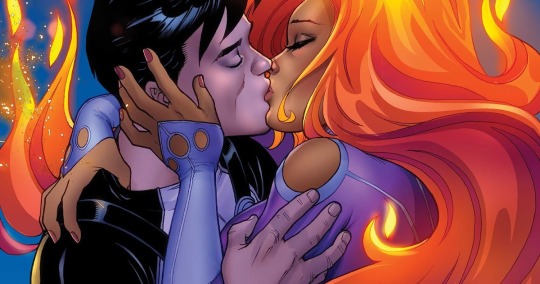
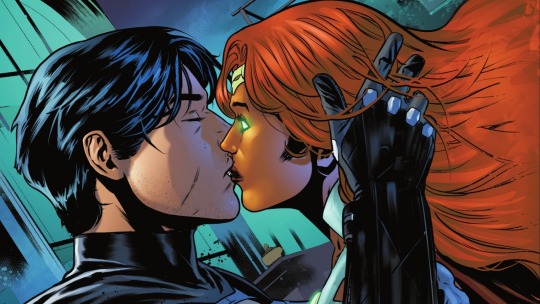
I'm still waiting for them to get back together....
265 notes
·
View notes
Text
#rb for more reach pls!#starwing#dickkori#dickkory#dickbabs#dickroy#dickwally#birdflash#dick grayson#koriand'r#kory anders#barbara gordon#roy harper#wally west#nightwing#starfire#arsenal#batgirl#oracle#kid flash#the flash#dc comics#dc ships#nightwing comics#richard grayson#ship poll#this is honestly hard because i like 3/4 of them#but i have a soft spot for birdflash so
123 notes
·
View notes
Text









Iron Factory Girls Series IFG-01 Starwing.
This figure was in development for a long time and had some big changes. Earlier version was a model kit with two bodies - armored and casual. This is a fully assembled figure except for swappable faceplates - 3 painted and 2 blank with 5 expression stickers.
#Transformers#maccadam#Starscream#Iron Factory#Ironfactory#Starwing#3rd party#transformers toys#figures
186 notes
·
View notes
Text
The Hope of Love: Eärendil and Elwing as Symbols of Romance in Popular Culture
KEY WORDS: Earendil, Elwing, Pop culture, Third Kinslaying, Sirion, Theater, Art, War of Wrath
Viewing options: AO3 | SWG
One of the most famous love stories in the history of Middle-earth, the quasi-mythical tale of Lady Elwing of the Havens at Sirion, last queen of Doriath, and her husband, Lord Eärendil of Gondolin has captivated popular imagination for centuries. Some of these portrayals are strikingly vivid, reaching to the heart of a young queen facing the destruction of her people at the hands of the Elves of the West, while others appeal to a narrower interest in the notion of the seemingly-doomed lovers overcoming insurmountable obstacles. We have seen everything from epic tales to reference in pop songs [See: Radio-favorite I’m Coming with its second stanza lyrics “Baby I’m falling fast/But our love will last/Baby I’m flying out to you/Hold your ship steady for me”] to more physical reminders of their story [See: Durin’s Jewelers’ pendant replica of the fabled “Phial of Galadriel” said to contain the light of the star of Eärendil. Its eye-watering price tag make it a niche item.]
What is it about this story that continues to draw us in year after year? Perhaps through an examination of the various efforts to tell Elwing and Eärendil’s tale, we can see.
The Play of Mirkwood – We know of the existence of this early play only due to the survival of a single document: a letter from a woman to a close friend. In it, she tells of her recent viewing of this sober tale. While hers is the only confirmation we have of the existence of the play, it would also be the earliest documented telling of the tale. Her story is very believable: it fits with the theory that Oropher, king of Greenwood the Great, and possibly also his son Thranduil, king of Mirkwood, were themselves Iathrim refugees who took shelter east with the handful of their surviving kinsmen after the Third Kinslaying. For them, Elwing’s tale would have been deeply personal to their cultural loss.
According to our letter-writer, the Play of Mirkwood has very few actors and focuses almost entirely on Elwing and her capacity as the last queen of Doriath. Her children do not appear in the play, but are frequently referenced, and her last words evoke a mother’s grief. Eärendil is relegated to barely a side character here, with Elwing’s mourning being largely for her people and her children. This tracks for the creation of a people mourning the death of their kingdom and their culture.
The Rivendell Frieze – Sadly, this frieze is all but ruins. However, a few key elements allowed for historians to eventually come to broad agreement that it depicts Elwing. The faded, cracked image—which must have once been a centerpiece of a likely highly visible installation, as even what remains suggest it was once fantastic in detail—shows a dark-haired woman clad in white, facing the viewer, clutching a shining jewel in one hand. Her location is unclear, due to the deterioration of the paint, but could plausibly be a cliffside.
The location in which this frieze was discovered also hints at the location of Imladris—more commonly known as Rivendell. This would also lean us towards assuming the figure in the frieze is Elwing, as Rivendell was formed and ruled over by Eärendil and Elwing’s son, Elrond. The discovery was a blow to the small minority of historians who continue to assert that Elrond preferred his Noldor heritage to the Sindar, or even considered himself Feanorian. They dispute the authenticity of the frieze as well as the details about its location and construction.
The Gondorin Opera (Title: Eärendil and Elwing) – This was the first effort by Men to retell the story of Eärendil and Elwing. Eschewing much of the politics of the day, the opera makes a love story of the tale, focusing almost entirely on the romance of Eärendil and Elwing. Here, they are childhood companions separated when Eärendil departs in early adolescence to spend time with his Edain kin. When he returns as a young man, he and Elwing fall in love at first reunion.
The later part of the opera centers on Elwing’s desperate flight to Vingilot and their impossible journey to Valinor. It concludes with their celebration in Alqualondë after securing the aid of the Valar.
Rumored to be a favorite piece of altos due to the standout solos available, this play captures a high romance angle of the story, digging deep into the personal feelings of Eärendil and Elwing and their quest for happiness and peace, with far less attention paid to the monumental historical significance of their actions.
Allegedly, it was popular in early performances to cast Hobbits as Elrond and Elros, as they took direction better than actual children. This fell out of favor when such casting choices came to be seen as infantilizing, though opinions differ even among Hobbits.
The Glamben Play (Title: Downfall of a Queen) – One of the most controversial depictions of Elwing in popular history. Here, the young queen is a self-centered and politically-inept scion of a dying dynasty, who out of pride refuses to surrender the Silmaril and by her own fumbling leaves Sirion open to the attack by the Feanorians. Downfall of a Queen fits in a few digs at Elwing’s ancestors as well. In a move fairly roundly condemned by historians, even those more inclined to show sympathy to Feanorian forces, Maedhros here bargains with Elwing for the release of her children for the Silmaril, which she entirely rejects, openly stating she would rather retain the jewel than her children.
Several runs of this play have Elwing slipping backwards off the cliff rather than making the decision to jump.
Eärendil himself does not even appear in the play and is perhaps implied to have abandoned Elwing by the end.
Downfall of a Queen has long since run out of whatever favor it had, and is not seen in any reputable theater these days. However, it does represent a viewpoint that at one point, had more traction, and the fight it has been for historians to reclaim the history of Elwing and Eärendil from popular misunderstandings.
The Angwedthor Film (Title: The Tale of Eärendil and Elwing and the Saving of Middle-earth) – This was the first effort to capture the story of Eärendil and Elwing on film, before “talkies” had hit the scene. As such, it is technologically incredibly limited, with a run time of only 40 minutes—and even this strained the finances and capacities of the studio. Some of the artistic license taken here is hard to understand—why, for instance, Elrond is here written as a female child, or why Elwing was given a youthful romantic affair with Gil-galad which motivates his effort to stave the Feanorians off the Havens.
Due to the expenses of the time, the film avoids any large-scale scenes of battle and destruction, and leaps somewhat jarringly from Elwing’s transformation to her and Eärendil’s arrival in Tirion. However, the film made several unique choices heretofore unseen in Middle-earth cinema, such as the crowds which awaited Elwing and Eärendil in Tirion. While historians debate the accuracy of whether or not Tirion would have evacuated on the news that strangers from over the sea had successfully landed in Valinor, it can’t be denied that this was the first time which crowds of this size had been portrayed in media. Furthermore, director Angwedthor went through the laborious effort of liberally showering the set in actual gold dust to give an ethereal, almost divine feel to the scene, and the sparkle of Tirion’s streets enchanted audiences at the time.
Furthermore, the film debuted several new cinematographic techniques which have since become standard in the film industry, although the film itself did not endure in popularity. For several decades, though, it was cherished by a loyal group of fans for the tender charisma between the lead actors, but few copies of it remain.
The Manthor Film (Title: Forever Across the Sea) – Learning from the experience of The Tale of Eärendil and Elwing, here was a stronger effort to capture this famed tale. This film opts to center Eärendil as the protagonist, with Elwing only entering the scene thirty minutes into the film, after Eärendil has already made the decision to begin questing for the Blessed Realm.
It is commonly agreed that the actress portraying Idril steals the first half of the show, despite her relatively few lines. Her powerful presence and guiding hand on Eärendil paint a picture of a remarkable woman and Falcthel’s palpable confidence onscreen bolster the image.
Behind-the-scenes controversy suggests Manthor originally meant to make a more foolish figure of Gil-galad: a dull-witted, self-interested clown who came to the throne only by chance. However, the actor playing him took things firmly in a different direction, presenting Gil-galad as war-weary and wary, though not unsympathetic to the unstable position of the Havens. In the end, director Manthor was so impressed with the gravitas of Goror’s portrayal that he ceded direction on the character to Goror.
Additionally, Tomben’s portrayal of Eärendil is still considered by many to be the best onscreen portrayal of Eärendil of all time. His booming voice and captivating demeanor make it all too believable that his sailors would follow him into the unknown time and time again.
Capping off these mesmerizing performances is Elwing’s final speech to the Teleri of Aman, a moment so fascinating that it has become the basis of many other dramatic confrontations throughout popular media. Almost anyone will recognize the line “I plead my hope,” or even its more extended version “Oh ye of foreign shores, I plead my hope. Let my home not be crushed ‘neath the boot of Bauglir,” even with no familiarity with the film. The passion of Torthoriel’s performance here has brought many a moviegoer to tears and captures a moment few had before bothered with—Elwing’s part in gaining the aid of Aman.
However, despite its artistic merit, this film is loudly criticized for fueling the largely-debunked myth that Eärendil came and went from Sirion multiple times during the course of Elwing’s converse with Maedhros, lord of the Feanorians.
The TV miniseries (Title: Saving Our Shores) – Attempting to reach a younger audience, this 5-episode limited series portrayed Eärendil and Elwing as high schoolers trying to stave off the efforts of Feanorian Oil Refining, Co. to validate some historical claim on the land where the teens’ hometown sits. Due to the characters’ young age, the kidnapping of Elwing and Eärendil’s children was replaced with the poisoning of Elwing’s beloved pet doves. Their backstories as refugees are largely retconned, though Elwing remains an orphan.
The series did not make much of a stir, being largely dismissed as an ineffective effort at “modernization.” The costuming and camerawork, standard at the time, painfully date the series and are contemporarily found laughably lacking in style or finesse. It was also criticized for putting its environmental message ahead of the story of the characters. However, it remains popular with teenagers (possibly in part due to the number of sequences the main characters spend lightly clad at the beach), such that at any given youth costume party, one is likely to observe at least a single young woman wearing Elwing’s signature look from the film: the breezy white sundress and the necklace of cowrie shells (a gift from Eärendil).
A few defenders of the series point to how well it captures the feeling of being up against an impossible enemy and how naturally Elwing and Eärendil’s relationship comes off. It is most remembered for the incredibly catching opening song, as well as a few other effective, limited uses of lyric throughout the series. So much so that it was said to be partial inspiration for the next adaptation in our study.
The Methoril Rock Opera (Title: Blood of the Day) – This is one adaptation people either love or hate (and in some cases, love to hate or hate to love). It makes no claims at being a historical piece and therefore makes no apologies for the broad artistic license it takes.
In this raucous stage performance—which includes, at one point, flamethrowers—Gil-galad sells out the location of Elwing and the Silmaril to the Feanorians in exchange for their recognizing his kingship, a scene which kicks off the story. Other notable stylistic choices include choosing to portray Tuor as a humorous if inept drunkard, the infamous make-out scene with Elwing and one of her female companions which is never raised again in the performance, Idril’s florescent pink mohawk and her somewhat bone-chilling solo “Mother Knows Best,” and the decision to show the Feanorians attacking the Havens with machine guns (one of which serves as Lord Maedhros’ prosthetic hand).
Historians largely disdain the piece, and its merits among the artistic community have been debated since its release, but what one cannot deny is the electrifying discography. Hearing Elwing scream into the microphone about having to choose between her city and her children is hair-raising in the best way, and the electric guitar work in Eärendil and Elwing’s love theme drives home the intensity of their relationship like nothing else. Other standouts include Tuor’s surprisingly touching goodbye to Eärendil before his and Idril’s departure, by far the quietest song of the score, and Eärendil and Elwing’s duet of lament for their lost homes.
What Blood of the Day captures is not the accuracies in detail of Elwing and Eärendil’s story, but the feelings of it. In these blaring odes to electrifying instruments that perhaps should not be electrified, Methoril captures the incredible weight of the feelings that bear on the lovers and their story.
The Helethwen Film (Title: Eärendil and Elwing) – Hopes were not high for this revival piece, with many arguing that we are past the need for further adaptations of this story. However, a number of opinion column writers were forced to eat their words after the debut of this box office-shattering instant classic. Helethwen’s masterpiece blew all expectations out of the water, even those of movie executives who argued that two and a half hours was far too long to engage any audience in a historical piece.
This is the first of any adaptation which begins with Elwing’s flight from Doriath during the Second Kinslaying and which centers her character around this formative trauma. It picks up Eärendil’s story with the trek of the Gondolindrim away from the smoking ruin of their city; they arrive in a Havens at Sirion already established by the Iathrim. The friendship between the child Elwing—initially aloof, but quickly warming up to the amiable Eärendil—and her companion is very believable thanks to stellar performances by the child actors, and the tender romance which blossoms in their late adolescence is sure to soften the heart even of the most cynical viewer.
This film also places the children—Elrond and Elros—firmly in the core of the narrative, with Eärendil and Elwing’s concern for their young family being a significant motivator. During the assault on the Havens, it is Elwing who lures the Feanorians away from the city center in an effort to keep them from discovering her children.
The main criticism of this film comes from the brief confrontation between Lord Amrod of the Feanorians and Elwing, wherein he attempts to rape her. The act never comes close to consummation, but there are voices on both sides, arguing that it accurately captures the violence of war, or that it was a distraction from the core story and unneeded additional victimization of Elwing. At least one DVD release of the film cuts the scene entirely.
There are others who feel Braxton’s performance as Eärendil does not compare with Tomben’s earlier performance, but most still feel that Braxton was a solid choice. Furthermore, Aelil’s electrifying portrayal of Elwing covers over any weaknesses in her co-star’s work. She is undoubtedly the heart of the story, a choice which many critics have cited as key to the film’s success.
Elfie Graphic Novel (Title: Peredhel Tale) – Beginning as a webcomic almost a decade ago, Peredhel Tale kicked off its print run two years back. Wrangling a huge cast of characters, creator Elfwyne (known online as “Elfie”)focuses the core of the story on Eärendil and Elwing, and their developing friendship and romance throughout their time in the Havens at Sirion, but also digs into backstories for supporting characters, featuring prominently Idril and Tuor and their struggles with a mortal/immortal marriage; Evranin’s difficulty in seeing Elwing grow up; and the history of Círdan the Shipwright as well as his relationship with Elwing (he here plays something of a grandfatherly role for her).
Peredhel Tale excels in the details of the story because it has the luxury of lingering on smaller elements that more condensed adaptations cannot. For instance, Elfie dedicates an entire chapter (18 pages) to Eärendil and Elwing’s first meeting on the beach as children. Their unusually adult dialogue in this sequence serves to display how quickly they have been forced to mature, and the difficult and heavy thoughts weighing on them even in the middle of seemingly normal child’s play. Her use of vivid color and bold linework make her style easily identifiable and lend great depth of emotion to her drawings. Her tonal coloring in particular sets the scene before any dialogue has been uttered.
The graphic novel has only issued the first book, which ends while Eärendil and Elwing are still in childhood and dealing with the struggles of their trauma as refugees and future leaders of their people, but the webcomic has gone as far as Elrond and Elros’ fourth birthday. Elfie also plans to include in one of the printed volumes the accompanying short story A Frog for Nana, which focuses entirely on Elrond and Elros, at play in the village and in the surrounding landscape of the Havens.
Much of the content in the story is pure fiction—Elfie goes into detail on things we simply cannot know, such as whether there was anything romantic between Elwing’s nurse Evranin and Gereth, or to what extent Elwing and Eärendil exhibited Elvish traits in spite of their mortal blood—but her author’s notes reveal a copious study of the historical period and frank admissions where things were invented for the sake of the story. Tonally, it remains consistent, and great attention was given to the most accurate depiction possible of life in the Havens, as well as various cultural details of the Gondolindrim and the Iathrim.
Above all, Peredhel Tale is a story of love—between Eärendil and Elwing, between Eärendil and his parents, between Círdan and Elwing, and between the people of the Havens and their city. Elfie never lets the reader stray too far from this core and the result is a deeply humanizing—if not wholly historically accurate—portrait not only of the central couple, but their friends, family, and neighbors. Scholars on this subject may wish to subscribe to future updates of Peredhel Tale to see how Elfie handles the Third Kinslaying and the voyage to Valinor.
Conclusion
What do all these things tell us about the story of Eärendil and Elwing and its place in society? First, it shows us that there is an enduring interest in a good love story—platonic or romantic—and that Middle-earth never loses its thirst for a tale of hope. Seeing characters onscreen, on stage, or on the page who have lost everything pick themselves up and carry on, find new purpose in life, can be comforting for us. There is something reassuring in seeing that, thousands of years ago, people loved and despaired and hoped just as they do now. It is a connection with ages long gone and an affirmation that we are all people—historical figures included.
Second, it illustrates the effectiveness of using a personal story to illustrate a historical event. The horror of the Third Kinslaying remains shocking and potentially overwhelming even today. The wanton loss of life as well as the wholesale cultural destruction from which the Iathrim never recovered is painful even now. Indeed, the tale of Elwing may be seen as the last gasp of the Iathrim, reaching through the years to remind us that they were here. However, it can be difficult to grasp the magnitude of such things. Wrapping it up in the personal story of Eärendil and Elwing’s struggles and tragedy drive it home in a way that facts and figures do not.
Most of all, it tells us that their story remains relevant even in our times and that we still find hope in their struggles and successes. Eärendil and Elwing are still speaking to us, and perhaps in listening, we are reaching back to tell them that their sacrifice matters. We may feel that these stories tell us we are not alone—but perhaps we also seek to tell them that they are not alone, either.
#earendil#elwing#starwing#the silmarillion#rocky writes#tolkien tag#fanfiction#tolkien fanfiction#fake academia
67 notes
·
View notes
Text
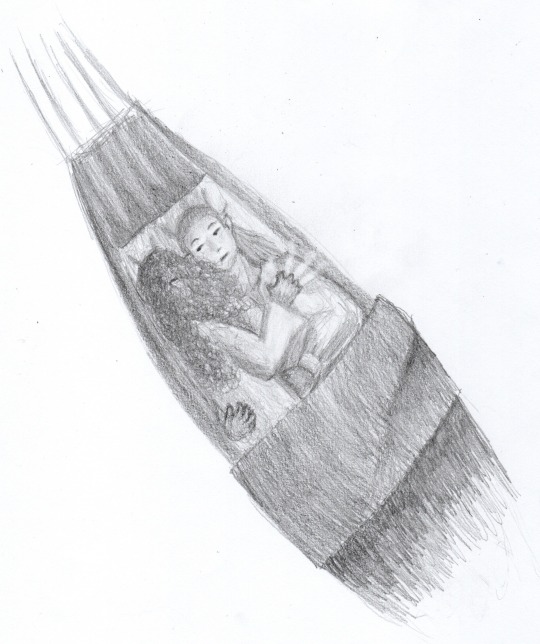
Eärendil waking up to find that Elwing is on his ship and she is no longer a bird
#tolkien stuff#tolkien#the silmarillion#silmarillion#elwing#earendil#earendil x elwing#elwing x earendil#starwing#fan art#my art#silm art
68 notes
·
View notes
Text
I think there needs to be fanart of Eärendil and Elwing like those horny old-school pirate romance novel covers. Case in point:
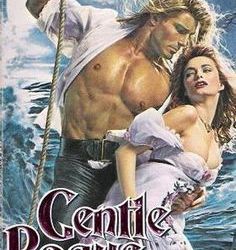
Yeah.
73 notes
·
View notes
Text
Some Eärendil and Elwing headcanons because I love them:
It took a long time for Eärendil to start singing again after Gondolin, and it was mostly sea shanties and Mortal tunes. Only in private and only with Elwing (and later, his sons) would he sing in Quenya the songs of his childhood in Gondolin.
When Elwing was 12, she decided that she wanted to be a great seafaring explorer and sail all the way around Middle-earth. Her hopes were rather harshly dashed when she stepped foot on a ship to pay Círdan a short visit on Balar and discovered that she suffered from terrible motion sickness. Eärendil gallantly vowed to go on the adventures instead and come back to tell her all about them.
Elwing is just a little bit taller than Eärendil. He quite likes it, even though it’s not a very great difference.
Eärendil is fantastic at sewing, and has a good eye for embroidery as well. When he has downtime on Vingilot, he creates beautiful patterns and designs on tunics, handkerchiefs, shawls. The crew of Vingilot was the most well-outfitted crew to ever sail the Sundering Seas, and he’d always make sure to bring back little embroidered patches with scenes from his voyages, which first Elwing and then the twins would add onto an ever-growing quilt.
Elwing learned how to make lembas from Idril, but for Eärendil’s journeys, she bakes him hardtack in the Mortal fashion. He likes to make “pudding” out of it with sugar and water.
Elwing loves math, and is very good at it. By the time she was ten, she could do complex calculations in her head in a matter of seconds that Elven scholars thousands of years her senior would need several minutes and a writing surface to do. She didn’t have the time or resources to seriously study it while she was in Middle-earth, but in Aman, she does a correspondence course with one of the universities in Alqualondë and promptly has to deal with a whole hoard of mathematicians coming from all over the Blessed Realm to her tower wanting to learn from her.
In their own home, they speak a mixture of Quenya, Sindarin, and Taliska with each other. They also have a secret written code that they came up with as children, which they leave little love notes for each other in.
Neither of them have ever learned to ride a horse. Eärendil has fuzzy memories of being put on his grandfather’s saddle for a gentle trot when he was young and the Gondolindrim assure him that he once briefly had a pony, but there were very few steads or mounts at Sirion. Frankly, both of them find horses a little bewildering.
The twins were a surprise because they’d been aiming for triplets. Mostly just to see if that was even possible, and also because neither of them had ever been pregnant before and didn’t truly understand what it would be like to carry and birth triplets.
Despite the harps of gold they brought to him, Eärendil does not actually play the harp very well. He’s not fond of wearing white either because he thinks it’s too hard to keep clean. Elwing looks very good in white, but it’s a mourning colour and she generally prefers warmer yellows and oranges.
Eärendil’s favourite colour is the soft silver of Elwing’s hair, and Elwing’s favourite colour is the warm gold of Eärendil’s hair. Their favourite wedding present was a tapestry woven by some of Idril’s ladies depicting the intermingled light of Telperion and Laurelin in those exact shades.
Elwing is a vegetarian. Eärendil isn’t, mostly for practical reasons onboard a ship with limited supplies, but is happy to eat vegetarian when he’s at home. The real challenge at mealtimes came from Elros being a picky eater and Elrond having a seafood allergy.
There is an outdoor bathhouse at Elwing’s tower because Silmaril glitter is absolutely impossible to get rid of once it’s in the house. The grout in the tiling there has become permanently shiny, despite their combined best efforts at scrubbing.
84 notes
·
View notes
Text
thank you @ethanray for letting me write for your gorgeous @fall-for-tolkien piece young elwing with birds! i hope you like this short drabble sequence.
read it on ao3 here.
~
The daughter of Nimloth the White and Dior Eluchíl the Beautiful is born at night under a blaze of stars shining against the silver waters of the Lanthir Lamath. Star-Spray, her mother names her as she rests, for the beauty of it as it lights up her newborn face, each tiny eyelash picked out perfectly in the light. Eyes closed, she curls into her mother’s breast.
The song of the nightingale has scarcely been heard in Beleriand since the departure of Melian. But as the dawn rolls over the horizon, their chorus rings throughout Ossiriand. It seems to say: sister.
~
Hello, the terns that nest in the soupy marshes at Sirion say to Elwing, we love you.
We love you, say the gulls, as they dive between the painted houses of the Edain. We love you, say the petrels as they make their way overhead to faraway places unseen and unheard of.
It is a small thing, but it helps, in its way. Elwing is only three, and she is very lonely. She holds her secret kinship with the seabirds of Sirion close to her chest –- like her father’s gem, it is precious, and so it is worth caring for.
~
“Is it true you can speak to birds?” the boy Eärendil asks her, not long after his arrival at the Havens.
Elwing shrugs a little. “They speak to me. Sometimes they listen, too.”
“Wow.” He kicks lightly at the sand. “I wish I could do something like that.”
She looks at him, from the corner of her eye. There is an earnestness in his young face that she likes. “I could show you how I call them to me, if you’d like.”
She holds out an arm, whistles, and they watch together, smiling, as the seabirds dive down towards them.
~
Here, the gull tells her. Look.
Elwing follows it across the sand, to the small tidal pool where it perches. Floating in the water amid the hair-like weeds: a bottle of blue sea-glass stoppered with a cork. She pulls it out, and unrolls the parchment within.
Elwing, beloved , the letter begins, all is well on the maiden voyage of Vingilot. But I miss you so!
She feels herself begin to smile, and hugs the letter against her breast. The gull rises into the air, its work done, and Elwing’s heart soars with it, high among the stars and the clouds.
~
The fairy terns hop along the shore in a miniature ballet, while Elwing’s sons watch, enraptured. Friends? One tern asks, shy. Friends. She assures it.
She pushes her bare toes into the sand as she observes the scene. Sirion is at its best in high summer: the laughter of children ringing along the beach, the shimmer of the sun and the Silmaril against the waves, the migratory birds returning towards the warmer weather. The twins’ father will be home soon, too.
One brave tern steps onto Elrond’s chubby hand. Another flutters towards Elros. All around them, tender joy takes flight.
51 notes
·
View notes
Photo

Studies of the original Fox puppet from Starfox.
#starfox#star fox#starwing#fox mccloud#nintendo#fanart#sketches#studies#my art#photoshop#i don't know what's up with the shading on the scarf don't look at it#also i didn't use the blues on the page don't @ me
118 notes
·
View notes
Text

The inventors of ‘Heart Eyes’
#I can’t stop thinking about them#dc bring them BACK#Biggest fumble#they are THE couple#nightstar#nightfire#idk their ship name I’ll be real#starwing#maybe?#dickkory#dick grayson#koriand'r#kory anders#dc comics#nightwing#starfire#ambrose art
279 notes
·
View notes
Text
Well, after a drought I did manage to finish one fic for @silmsmutweek! Feeling optimistic I can pull off another. Help me decide which one to focus on? No guarantees...
26 notes
·
View notes
Text
dickkori but specifically in tumblr fanart (or teen titans) is my favorite and birdflash in ao3 fics (or young justice) is also my favorite, yk?
#dc comics#dcu#dick grayson#dickkori#birdflash#dickwally#dickkory#starwing#i just realized that’s their ship name omg#starwing is so cute
78 notes
·
View notes
Text









I thought these were new photos but it's the same as before just unedited.
Still no release date.
Iron Factory - Starwing.
60 notes
·
View notes
Text
Why Ship Eärendil/Elwing?
I think there are a lot of good reasons so let’s have a look (。・∀・)ノ゙
1. They have a lot in common. Both of them went through pretty traumatic events as children that involved being driven from their homes by an attacking force, losing family to that attacking force (Eärendil’s grandfather, Elwing’s parents and her brothers), and ending up refugees. They’re also at this point the only Peredhil in Middle-earth. There are a lot of difficult experiences they share, which allows them to understand each other on a level people without those experiences can’t as well.
2. They grew up together. They grew up in the Havens at Sirion and childhood-friends-to-lovers is a fire trope as far as I’m concerned. It’s very possible they played together as kids and they were there through each other’s awkward adolescent phases and talked each other through other crushes before they finally got together.
3. They obviously care about each other. We don’t see the details of a lot of marriages in The Silmarillion. Many of them are left wholly to the imagination as to how those characters acted around each other, but Eärendil and Elwing are explicitly devoted to each other.
“Eärendil found not Tuor nor Idril, nor came he ever on that journey to the shores of Valinor, defeated by shadows and enchantment. driven by repelling winds, until in longing for Elwing he turned homeward....” (Emphasis added)
Eärendil attempting his first voyage to Valinor is beset by all kinds of dangers, but it’s missing Elwing that finally makes him turn back and call this trip a bust.
“For Ulmo bore up Elwing out of the waves, and he gave her the likeness of a great white bird, and upon her breast there shone as a star the Silmaril, as she flew over the water to seek Eärendil her beloved.” (Emphasis added)
Beloved remains one of the peak terms of endearment, lbr.
“Then Eärendil, first of living Men, landed on the immortal shores...And Eärendil said to [his companions]: ‘Here none but myself shall set foot, lest you fall under the wrath of the Valar. But that peril I will take on myself alone, for the sake of the Two Kindreds.’
But Elwing answered: ‘Then would our paths be sundered for ever; but all thy perils I will take on myself also.’ And she leaped into the white foam and ran towards him...”
Elwing really said “if you’re damned then I will be too.” Here she accepts Eärendil’s fate, just as Eärendil later accepts hers and chooses the Elven path.
“But when all was spoken, Manwë gave judgement, and he said: ‘In this matter the power of doom is given to me. The peril that he ventured for love of the Two Kindreds shall not fall upon Eärendil, nor shall it fall upon Elwing his wife, who entered into peril for love of him...” (Emphasis added)
Even the Valar recognize how much these two care about each other!
“And at times, when Eärendil returning drew near again to Arda, she [Elwing] would fly to meet him, even as she had flown long ago, when she was rescued from the sea. Then the far-sighted among the Elves that dwelt in the Lonely Isle would see her like a white bird, shining, rose-stained in the sunset, as she soared in joy to greet the coming of Vingilot to haven.” (Emphasis added)
After their journey, even in spite of all their grief, they still find joy in one another. Their marriage is still strong even through everything they’ve seen.
4. They saved Middle-earth together. These two did what no one else had managed and sailed back to the Blessed Realm to get help for Middle-earth. Clearly, power couple moves.
”Yet Eärendil saw now no hope left in the lands of Middle-earth, and he turned again in despair and came not home, but sought back once more to Valinor with Elwing at his side.”
Friendly remind this journey is supposed to be impossible, but they are determined to do it because they know Middle-earth cannot survive without the intercession of the Valar.
“Few of the Teleri were willing to go forth to war, for they remembered the slaying at the Swanhaven, and the rape of their ships; but they hearkened to Elwing...and they sent mariners enough to sail the ships that bore the hose of Valinor east over the sea.”
But for Elwing, the Teleri would not have engaged in the war effort at all; she alone convinced them to help.
“But Eärendil came, shining with white flame, and about Vingilot were gathered all the great birds of heaven and Thorondor was their captain, and there was battle in the air all day and through a dark night of doubt. But before the rising of the sun Eärendil slew Ancalagon the Black, the mightiest of the dragon-host, and cast him down from the sky...”
From start to finish Eärendil and Elwing have been committed to saving Middle-earth from Melkor’s menace and boy do they see it through.
5. Eärendil chooses immortality to stay with Elwing. In a mirror of Beren and Lúthien’s story, Eärendil surrenders a mortal fate to stay joined with Elwing.
“Then Eärendil said to Elwing: ‘Choose thou, for now I am weary of the world.’ And Elwing chose to be judged among the Firstborn Children of Ilúvatar, because of Lúthien; and for her sake Eärendil chose alike...”
Eärendil both trusts Elwing to make this choice for both of them and makes the same choice as her even though it isn’t his first preference.
6. Eärendil named his boat, which becomes the immortal vessel in which he sails through the skies, after Elwing. Can we say romance?
7. Elwing gives Eärendil the Silmaril. In general, most people who get their hands on a Silmaril are not keen to give it up. Yet Elwing passes the Silmaril onto Eärendil without a fuss and never again takes possession of it.
8. Their super rad mythological couple energy. Half-Elven couple who braved the sea to voyage to a realm it was supposed to be impossible for them to find to bring back divine help for their home? Last queen of the forest kingdom who in her moment of greatest despair is lifted up by divine forces and transformed? Hero of the last bastion of the Elves in Middle-earth who uses his mariner skills to make an impossible voyage, bearing back a jewel thought lost forever? Former Elven queen who now abides in a white tower on the sea and talks to birds and transforms into a bird herself to fly up to greet the return of her husband? Immortal captain of a flying ship that slew a dragon and now keeps watch over the stars? They are killing it y’all.
Feel free to add on o(* ̄▽ ̄*)ブ
All quotes in this post are from the “Of the Voyage of Eärendil and the War of Wrath” chapter of The Silmarillion!

Convinced? Not convinced? Try these fanfic recs under the cut:
At the Water’s Edge by crackinthecup - G - 3,349 - Eärrámë is nearly ready to sail. Tuor and Idril’s days at the Havens of Sirion are drawing to an end. It is a time of loss and hope for all, and Elwing is no exception.
Elwing, Survivor by crownlessliestheking - T - Elwing and Earendil after arriving in Valinor.
From the Ones Who Came Before by Krita - T - 5,247 - Elwing was young when Menegroth fell. Melian's line is complicated, but far more so is growing into yourself.
A Glimpse of the Harbor by me - G - 1,925 - Elwing watched for the return of Earendil's ship.
How Big, How Blue, How Beautiful by mochimilku - T - 1,185 - Eärendil, Elwing, and the ocean.
Let Us Taunt Old Care with a Merry Air / And Sing in the Face of Ill by me - G - 643 - When Elwing lands in the Havens, she befriends a young princeling from Gondolin.
The One With All the Birds by clothono - G - 46,543 - Elwing and Nerdanel in Valinor in the Fourth Age; a story about children coming home.
So Summer Comes by potatoesanddreams - G - 2,654 - Ada said he would be home by autumn equinox. It is winter solstice now.
Untitled by simaethae - G - E-squared family fluff.
#elwing#earendil#the silmarillion#meta#tolkien tag#let me just be clear I do not want to hear about why you think they were terrible#or why you want to portray them as shit parents#this is not the post for that#I am trying to be positive dammit#starwing#earendil x elwing#mine#earendil defense#elwing defense
106 notes
·
View notes
Text
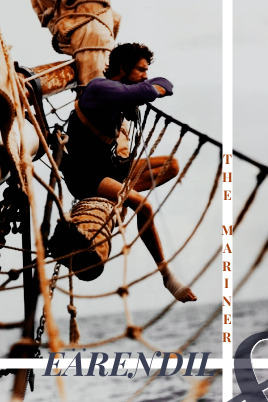

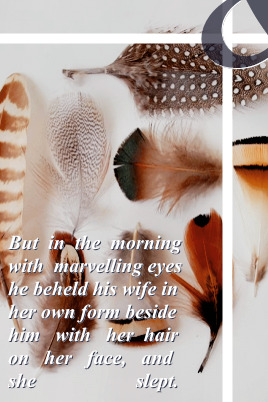

For Rosie // @tarninausta — Happy birthday! (insp.)
And Eärendil said to them: “Here none but myself shall set foot, lest you fall under the wrath of the Valar. But that peril I will take on myself alone, for the sake of the Two Kindreds.” But Elwing answered: “Then would our paths be sundered for ever; but all thy perils I will take on myself also.” And she leaped into the white foam and ran towards him.
#tolkienedit#silmedit#tuserosie#usercharithra#usertilions#usersari#oneringnet#fandomaesnet#earendil#elwing#starwing#tolkien#silmarillion#elves edit#otp: but all thy perils i will take on myself also#mine#posters#humans edit
82 notes
·
View notes